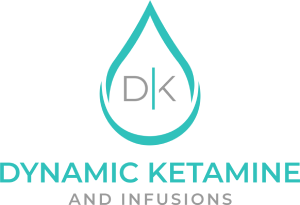Comprehensive Mental Health and Pain ConditionsHealed with Ketamine in Houston
Ketamine For Treatment-Resistant Disorders
Ketamine therapy is an exciting new treatment in psychiatry that can help with various conditions. If you’re dealing with depression that has not responded sufficiently to medications, whether it’s unipolar depression or bipolar depression, ketamine can work quickly to improve your mood and even reduce thoughts of suicide within the first treatment. For those who haven’t found relief from PTSD and anxiety through other treatments, ketamine might provide the help you need. It’s also showing promise for people with obsessive-compulsive disorder (OCD), potentially helping to ease troubling thoughts and behaviors. If you’re struggling with alcohol use, ketamine could aid in reducing cravings and supporting your recovery. And if you’re dealing with chronic pain, ketamine’s pain-relieving effects might be able to help both the physical sensations and the emotional toll it takes. To ensure safety and effectiveness, we recommend ketamine only for conditions that have evidence supporting its use.
Major Depressive Disorder
Treatment-resistant major depressive disorder (MDD) is a
complex mental health condition characterized by persistent feelings of
sadness, hopelessness, and a lack of interest or pleasure in previously enjoyed
activities. Despite undergoing various treatment interventions, individuals
with this condition continue to experience symptoms that significantly impact
their daily functioning and overall quality of life.
Symptoms Checklist:
- Persistent low mood or sadness
- Loss of interest or pleasure in activities
- Changes in appetite or weight
- Insomnia or hypersomnia
- Limited response to multiple treatment approaches
- Fatigue or lack of energy
- Feelings of worthlessness or excessive guilt
- Difficulty concentrating or making decisions
- Recurrent thoughts of death or suicide
Bipolar Depression
Bipolar depression is a facet of bipolar disorder characterized by depressive episodes, which alternate with periods of manic or hypomanic episodes. During depressive episodes, individuals experience profound sadness, loss of interest, and a range of physical and cognitive symptoms.
Symptoms Checklist (Depressive Episode):
- Depressed mood or profound sadness
- Diminished interest in activities
- Changes in appetite or weight
- Suicidal thoughts
- Sleep disturbances
- Fatigue or lack of energy
- Feelings of worthlessness or guilt
- Difficulty concentrating
Post Traumatic Stress disorder
Post-Traumatic Stress Disorder (PTSD) is an anxiety disorder that develops in response to a traumatic event. Individuals with PTSD may experience intrusive memories, nightmares, and avoidance behaviors that stem from the trauma. They may also exhibit heightened arousal and emotional reactivity.
Symptoms Checklist:
- Intrusive and distressing memories or flashbacks
- Recurrent nightmares related to the trauma
- Recurrent nightmares related to the trauma
- Difficulty concentrating or sleeping
- Negative changes in thoughts and mood
- Feeling anxious and on edge
- Exaggerated startle response
- Irritability or anger outbursts
- Hypervigilance or constant vigilance
Treatment Resistant Anxiety
Treatment-resistant anxiety refers to chronic and excessive worry and apprehension that persist despite multiple attempts at intervention. Individuals with this condition may experience restlessness, physical symptoms of anxiety, and avoidance behaviors that impact their daily lives.
Symptoms Checklist:
- Excessive worry or apprehension
- Restlessness or feeling on edge
- Fatigue or difficulty concentrating
- Avoidance behaviors
- Irritability
- Muscle tension
- Sleep disturbances
- Limited response to standard anxiety treatments
Obsessive Compulsive Disorder
Obsessive-Compulsive Disorder (OCD) is an anxiety disorder marked by intrusive, distressing thoughts (obsessions) that lead to ritualistic behaviors or mental acts (compulsions). These compulsions are performed to alleviate the distress caused by the obsessions, but they can interfere with daily life.
Symptoms Checklist:
- Obsessions (unwanted and distressing thoughts)
- Compulsions (repetitive behaviors or mental acts)
- Distress caused by obsessions
- Efforts to neutralize obsessions through compulsions
- Time-consuming nature of compulsions
- Interference with daily functioning due to obsessions and compulsions
- Resistance to compulsions often leading to distress
Alcohol Use Disorder
For individuals grappling with a challenging relationship with alcohol, characterized by its impact on daily life and overall well-being, Alcohol Use Disorder (AUD) might be the underlying concern. Studies have shown that ketamine can help reduce alcohol craving and improve abstinence even 6-12 months after the treatment. It can also reduce depression in people struggling with alcohol use disorder and depression.
Symptoms Checklist
- Drinking more than intended
- Struggling to reduce or stop alcohol intake
- Devoting considerable time to obtaining, using, or recovering from alcohol
- Sacrificing important social, occupational, or recreational pursuits in favor of alcohol
- Continuing alcohol use despite awareness of its negative impacts
- Experiencing cravings or an intense urge to consume alcohol
- Persisting in alcohol use despite interpersonal or social problems arising from it
- Engaging in hazardous alcohol consumption
- Tolerance
- Withdrawal symptoms when reducing or stopping use
Chronic Pain
Complex Regional Pain Syndrome (CRPS), also known as Reflex Sympathetic Dystrophy (RSD), is a complex condition that often happens after an injury. It leads to strong and lasting pain that’s worse than what you might expect from the initial injury. This pain can spread to other parts of your body. You might also notice changes in the way your skin looks, feels, and even its temperature. Ketamine can help relieve pain associated with CRPS.
Symptoms Checklist:
- Ongoing and severe pain that's out of proportion to the initial injury or cause
- Changes in skin color, often appearing blotchy, pale, or reddened
- Muscle spasms and twitching in the affected region
- Increased sensitivity to touch, even the lightest touch can be extremely painful
- Pain that hinders daily activities and functioning
- Sleep disturbances and fatigue due to pain
- Limited response to traditional pain management methods
